
The title track to the soundtrack for the musical, Spike 150: As One.
- Subject:
- Arts and Humanities
- History
- Music
- Social Science
- Society and Culture
- Provider:
- Utah Education Network
- Date Added:
- 09/24/2019

The title track to the soundtrack for the musical, Spike 150: As One.

The atmosphere is divided into different layers based on differences in temperature.
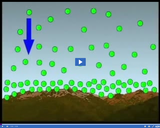
The air closer to the Earth is denser than the air above it because the weight of atmospheric gases above compress it.

Satellites and space shuttles orbiting the Earth travel in the Exosphere.

Pollutants can damage the ozone layer, creating large holes.
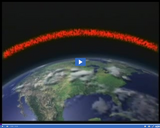
Particles of gas, called ions, become electrically charged in the ionosphere. The ionosphere plays an important role in transmitting radio waves.

The thermosphere is divided into two layers: ionosphere and exosphere.
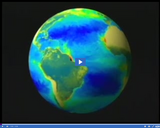
Temperature plays an important role in delineating the layers of the atmosphere.
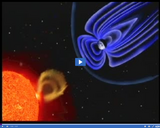
When the sun bombards Earth with large quantities of ions, they get trapped in the magnetosphere.

The ozone, located in the stratosphere, absorbs ultraviolet rays from the sun.

The stratopause separates the stratosphere from the mesosphere.

The stratosphere extends from the troposphere to 50 kilometers above Earth.
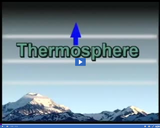
Located above the mesosphere, the thermosphere is a very hot layer of the atmosphere.

The tropopause separates the troposphere from the stratosphere.
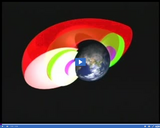
The belt of charged particles surrounding the Earth, referred to as the Van Allen Radiation Belt, is located in the magnetosphere.
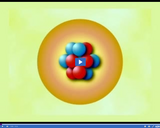
The number of protons of an element is constant, but the number of neutrons can change. Isotopes are atoms of the same element with different numbers of neutrons.

Carbon can exist as carbon 12 or carbon 14.

Compounds are formed by joining atoms of two or more elements. In this animation an ionic bond holds atoms together.
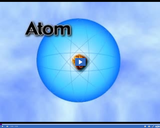
Atoms of the same element are exactly alike. This animation depicts a copper atom.
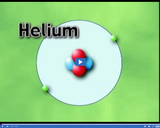
The four atoms depicted here have a different atomic number, which refers to the number of protons in the nucleus. The atomic number of helium is 2, aluminum is 13, hydrogen is 1, and oxygen is 8.